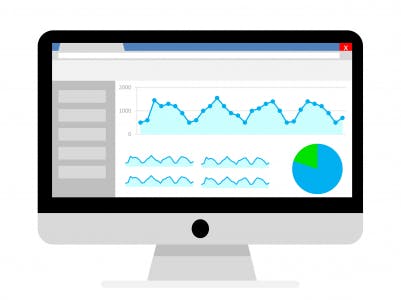Your website is your business. With any business, whether online or offline, you need to collect and analyze statistical data to determine how your enterprise is performing and how you can make it work better.
For your business’s convenience, there are a number of free and paid web analytical tools you can find online. With the help of these powerful tools, you can help your business perform at its optimal level. You can determine keyword effectiveness and ditch keywords that lose you money. You can discover how much traffic each search engine is sending your way and conversion rates for each. And with analytics, you can fine-tune and improve your content performance.
Where You Can Seek Web Analytical Help
With so many facets of online optimization, there are a plethora of both free and paid resources that can help you analyze the performance of your site.
Free Help
Google Analytics – Google, by far, is the leading source of free web analytic help. Their tools allow you to improve your online results by GeoTargeting your market, monitoring date trends, benchmarking against other sites, and even running custom reports on keyword and campaign comparisons. The help from Google Analytics and Google Webmaster Tools is excellent, and best of all, it’s completely free.
Piwik – Piwik is another free web analytics tool that is an open-source downloadable software program you can install and use on your own server. It is a MySQL application that gives you visitation stats about where your visitors come from, which pages they visit, and how long they stay. You can even embed statistical graphs on your website or blog.
StatCounter – StatCounter is another free analytical tool that can track your visits with summary charts and keyword activity. This tool provides more detailed information about each visitor, including country, city, and even web browser.
Paid Analytics
GetClicky – GetClicky is a paid analytical tool website that is affordable and provides ample basic web traffic information, such as visitor in-traffic, keyword and campaign tracking, bounce rate, and more. If you’re looking for good analytics for a cheap price, this is a great place to start.
Lyris – Lyris is another paid web analytics starting at $99 per month that gives members the ability to easily view visitor behavior and analyze traffic statistics in context.
What Parts of Your Website Can You Improve?
Keyword Analysis

As we have emphasized previously, keywords are the lifeline to your online business. You must know the right keywords to incorporate throughout your website that will attract the best target traffic. You need to capitalize upon the keywords that are the most lucrative to you.
Using web analytics to compare keywords, you can determine which gets the most traffic and which keywords are too saturated – allowing you to focus your keyword choices. Web analytics can also provide you with alternate keyword choices that visitors use that you may find work better in reaching your target audience.
In addition to keyword comparison, web analytics also help you see which keywords your visitors use to find your site. With this type of help, you can easily incorporate more keyword saturation in your website according to the behavior of past visitors.
Landing Pages
Landing pages in this context are the pages other than your “home” page that you design to attract visitors through keyword and Adword campaigns. One of the great benefits of web analytical tools is that you can compare two or more landing page campaigns to determine which attracts the most visitors and converts the most customers.
One strategy may be to design a long-text landing page and a short-text landing page version and develop a pay-per-click campaign for each. With your analytical tools, you can see which one will provide the best statistical data and focus more campaign effort through that landing page.
Browser Optimization
Most webmasters know that the most widely used web browsers used on the internet are Mozilla Firefox, Internet Explorer, and Apple’s Safari. But there are browsers such as Opera, Netscape, Chrome, and others that are used by internet surfers.
Web analytics give you the tools to track browser usage. Therefore, you can determine the browsers most used by your visitors and optimize your website to be most effective with those brands.
Segmented Targeting
Your web analytics allows you to gather market research data that provides you the keys to determine your main target markets and market segments. Use the reporting tools provided by your web analytics tools or even design your own segmented reporting tools. Through these tools, you can design a marketing effort focused on segments such as particular geographic markets, keywords, and/or demographical markets.
Conversions
Your goal with your website, landing pages, and keyword campaigns is to convert visitors into paying customers. With your web analytics, you can improve conversions by seeing which landing pages and campaigns attract the most traffic and convert the highest percentage of that traffic. Allow the reporting tools to show you which visitors convert at what page. Then you can narrow your conversion focus to follow your statistical conversion patterns.
Don’t let this list limit you in how you can apply web analytical tools. There are many more ways to use the tools to improve your website performance which we have discussed in previous articles. Try using web analytics to improve landing page and doorway optimization, following social media links, and even updating your content to attract more visitors.
Resources:
